Does Your TV Support HDMI 2.1? 3 Quick Checks
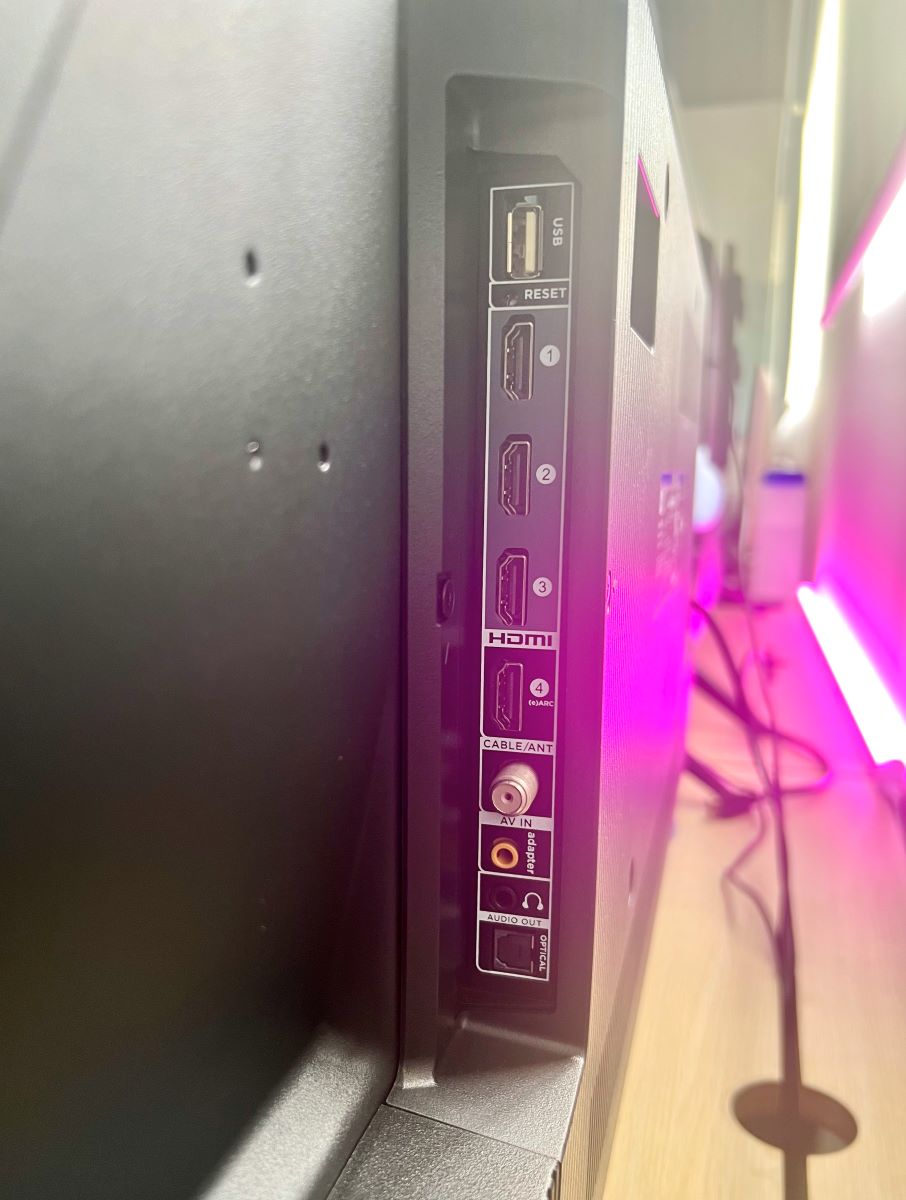
- To determine if your TV has HDMI 2.1, check the specs for an “HDMI 2.1” label or use “Ctrl + F” and search “2.1” in the online manual.
- An eARC port on your TV indicates HDMI 2.1 support; verify by examining port labels or searching “eARC” in your TV’s online specifications.
- HDMI 2.1 supports 4K/8K at 120Hz; confirm this by looking for “4K@120Hz” in your TV model’s specs or HDMI port markings.
Let’s unlock the full potential of your entertainment system by confirming if it’s equipped with HDMI 2.1, which is crucial for the highest-quality gaming and streaming.
This article delivers the insights to quickly ascertain your TV’s HDMI 2.1 capabilities.
Quick Navigation
3 Ways to Check If Your TV Has HDMI 2.1 Ports
If you’d like to know whether your TV has HDMI 2.1 ports, here are the different methods to find that out.
1. There is an “HDMI 2.1” Tag on Your TV’s Specs
Since HDMI 2.1 is more capable than its preceding version and a feature in itself, TV makers will not forego the opportunity to tout it to prospective buyers.
HDMI 2.1 ports are currently synonymous with high-end televisions only. You shall find it mentioned in the TV’s specifications in the product manual or online.
If the online manual is too lengthy to peruse, hit the “Ctrl + F key” combination on your keyboard and enter “2.1” in the search box. If the TV has an HDMI 2.1 port(s), it will pop up like in the picture below.
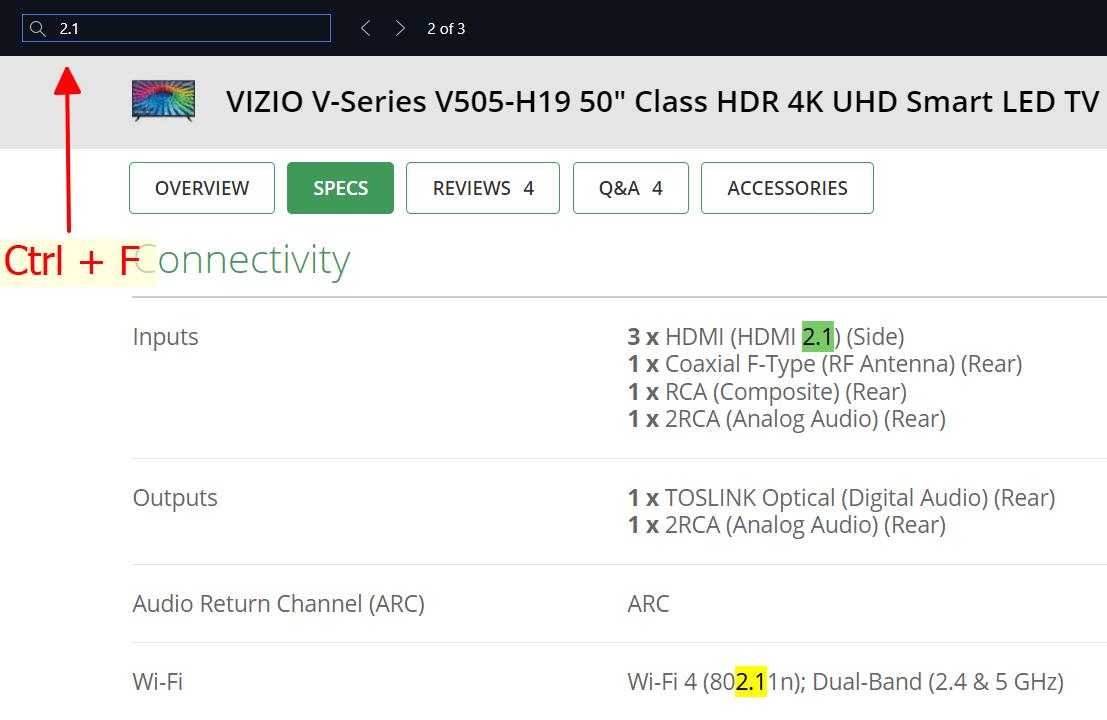
2. There is an eARC Port on Your TV
If your television has the eARC port, you can rest assured the device supports HDMI 2.1.
HDMI eARC is a more robust avatar of ARC (Audio Return Channel), a feature added to HDMI in 2009 with HDMI 1.4. It allowed audio to travel in the opposite direction along an HDMI cord.
eARC was introduced in 2017 as one of HDMI 2.1’s defining features. It supports increased bandwidth for data transfer, much higher resolutions, etc.
To ascertain whether your television supports eARC, do one of the following:
Check the labels on your TV’s HDMI ports: If one of the ports supports eARC, it should carry a conspicuous sticker or marking. The image below is a solid example of that.
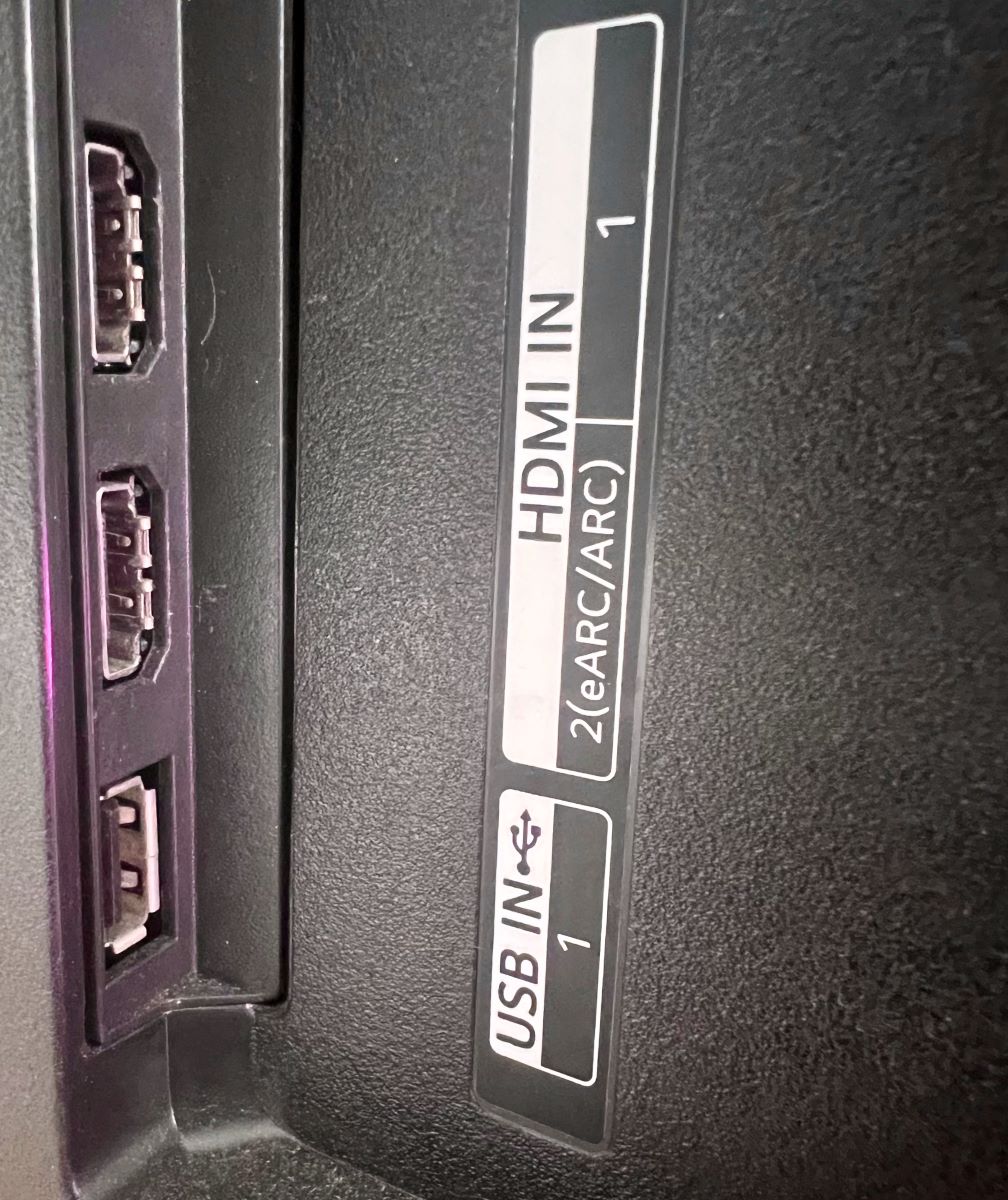
Read the TV’s specifications online: Search for your model’s specifications on the interwebs and look for “eARC” mentioned somewhere.
You can find the necessary information on the product’s official website or a trustworthy third-party website. Example: LG QNED99 65” 8K TV (LG | RTINGS).
When on your TV’s product page, press Ctrl + F and input “eARC” in the search box to expedite the search.
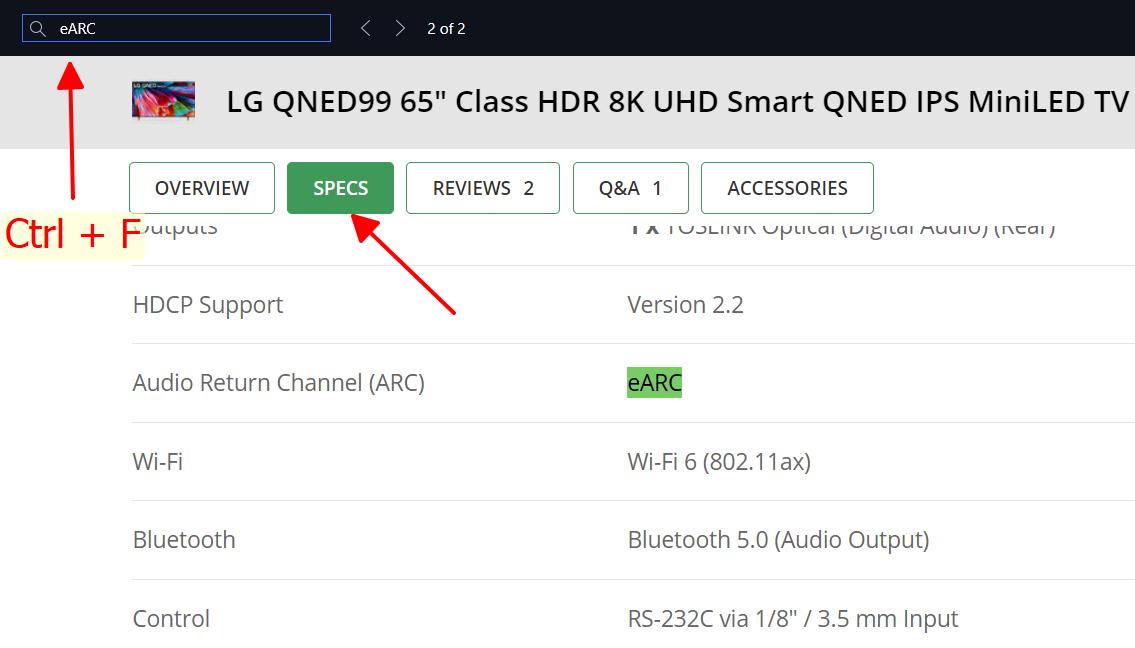
Although eARC is synonymous with HDMI 2.1, it can be retrofitted to HDMI 2.0 through a software update.
That means even if your TV doesn’t have an HDMI 2.1 port from the beginning, you can still benefit from eARC and other HDMI 2.1 features. Check if your TV has the update installed or if there’s one incoming.
3. Check the Resolution & Refresh Rate
One of the salient features of HDMI 2.1 is its innate 4K/8K @ 120Hz support. HDMI 2.0, for context, can do only up to 4K at 60Hz.
If the product page, user manual, or the TV’s HDMI port(s) say “4K@120Hz” somewhere, the TV supports HDMI 2.1.
To confirm the same, research your TV model’s specs online. When on the page, use the aforementioned “Ctrl + F” keys and enter “refresh rate” in the box to ascertain the 120Hz listing.
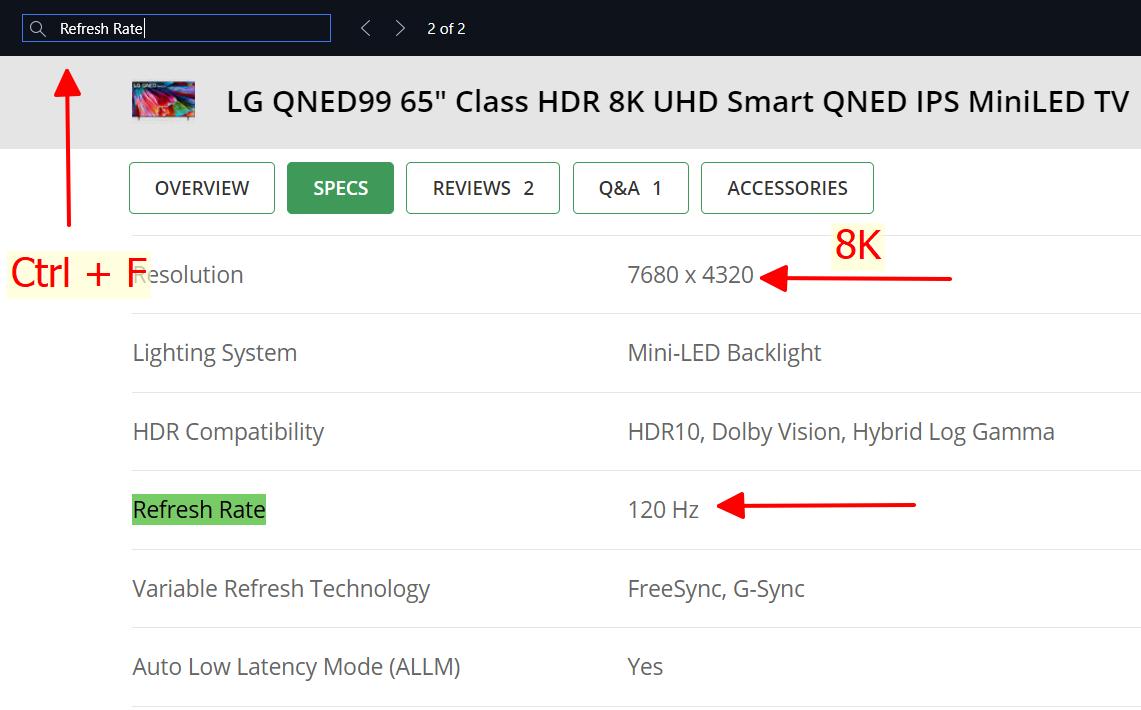
What is HDMI 2.1 Capable Of?
HDMI 2.1 is a monumental leap over 2.0, offering a constellation of capabilities, especially with regard to multimedia connectivity.
If you’re wondering if HDMI 2.1 is worth it, go through its capabilities below and decide for yourself.
- As mentioned earlier, HDMI 2.1 does 4K at 120Hz and also supports up to 10K at 120Hz when DSC (Display Stream Compression) is employed. DSC compresses video data transmitted from the source to the display. The compression reduces video data transmission over HDMI without quality loss.
- HDMI 2.1 can do data transfer speeds up to 48 Gbps. The immediately preceding HDMI 2.0 supported only up to 18 Gbps. The elevated bandwidth facilitates higher refresh rates and resolutions, advanced audio formats, support for future audio-video transmission requirements, etc.
- HDMI 2.1 supports “Dynamic HDR.” Dynamic HDR optimizes HDR content scene by scene, replacing the static HDR effect of its predecessor.
- A few other advanced aspects HDMI 2.1 brings to the table include eARC (as explained above), variable refresh rate (VRR), Quick Frame Transport (QFT), Auto Low Latency Mode (ALLM), Quick Media Switching (QMS), Source-Based Tone Mapping (SBTM), etc.
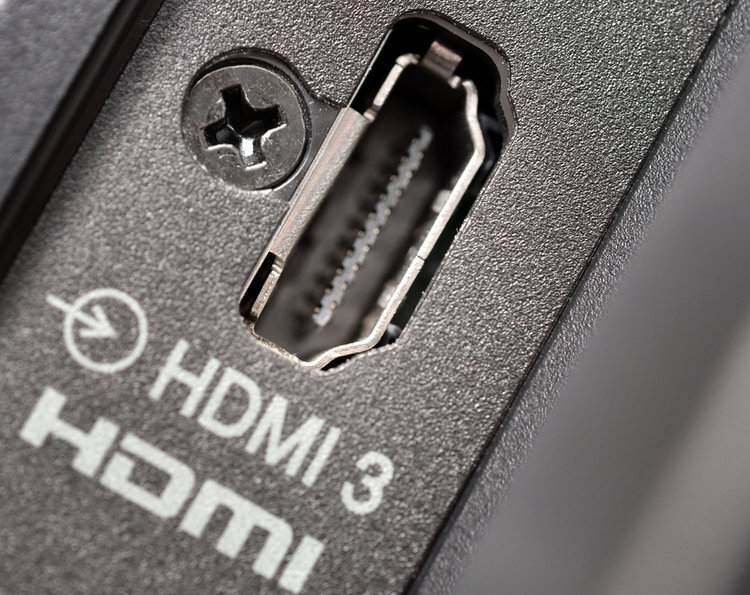
VRR decreases or eliminates lag, frame tearing, and stutter for more detailed and fluid gameplay. Modern console and PC games don’t use one frame rate throughout. VRR adeptly manages the disparity in frame rates so that the TV doesn’t have to resort to guesswork.
ALLM automatically sets optimal latency for lag-free, smooth, and unhindered viewing. The function enables the display to ascertain when a signal comes in from a source device (PC, gaming console, etc.).
True to its nomenclature, QFT decreases the time a video frame takes traveling to a display (TV, VR headset, etc.) from a source device (like a console or PC). For example, interactive VR (virtual reality) benefits from decreased latency and zero lag when gaming.
QMS helps obliterate the delay often linked with changing media formats or types. QMS is particularly handy if you frequently switch between gaming consoles, cable boxes, streaming devices, and other content sources.
To learn more about HDMI 2.1 and how it differs from previous HDMI versions, kindly read this article: “HDMI ARC vs. Regular HDMI: Breaking Down the Differences.”
Bonuses
1. Do You Need HDMI 2.1 for Your TV?
Yes, you need HDMI 2.1, but only if you’re a gamer. Otherwise, HDMI 2.1 is more than handy or a nice future-proof feature.
Apple TV supports video resolution up to 4K at 60Hz. To render that, HDMI 2.0 is more than enough.
In other words, you don’t need HDMI 2.1 to watch movies and shows on your TV at the highest quality on Apple TV and most other streaming platforms.
But if you like to revel in the world of Xbox or PS5 games at 4K (120 Hz) with VRR, HDR, and all the aforementioned gaming perks, your TV’s lack of HDMI 2.1 will quickly metamorphose into a palpable longing.
Click the links for a comprehensive deep-dive into the 120 Hz PS5 and Xbox games realm.
2. Do All TVs Have HDMI 2.1 Ports?
No, not all TVs have HDMI 2.1 ports. Because HDMI 2.1 was introduced relatively recently (in 2017), only TVs made during or after 2017 support 2.1 natively.
And since HDMI 2.1 is a “premium” feature, only TVs belonging to the upper echelons or a smaller cluster of post-2017 manufactured TVs solely adorn the latest HDMI port.
While zero inherent impediments preclude companies from equipping their budget and mid-tier TVs with an HDMI 2.1 port or two, making HDMI 2.1 standard in TVs may not be cost-efficient or practical, especially in the face of no major public outcry.
Companies assume (with sound justness) that people watching movies and shows in their homes may not express a dire requirement for the technological leap, finding contentment in HDMI 2.0’s offerings.
Conclusion
A couple of years ago, HDMI 2.1 was relatively new. It was okay to buy a TV that did not have the 2.1 port.
Things, however, have progressed over the years, and HDMI 2.1 is no longer a nascent technology, especially considering the uptick in gaming consoles and the marked progressions in both TV video and audio technologies.
Although the latest HDMI standard is not an absolute necessity in budget TVs, it is pretty much essential if you opt for a flagship device. And the reasons for that are elucidated quite clearly above.
As far as ascertaining whether your TV has an HDMI 2.1 port(s), it’s not that arduous an endeavor, especially with the tips and methods shared above.
Catherine Tramell has been covering technology as a freelance writer for over a decade. She has been writing for Pointer Clicker for over a year, further expanding her expertise as a tech columnist. Catherine likes spending time with her family and friends and her pastimes are reading books and news articles.


